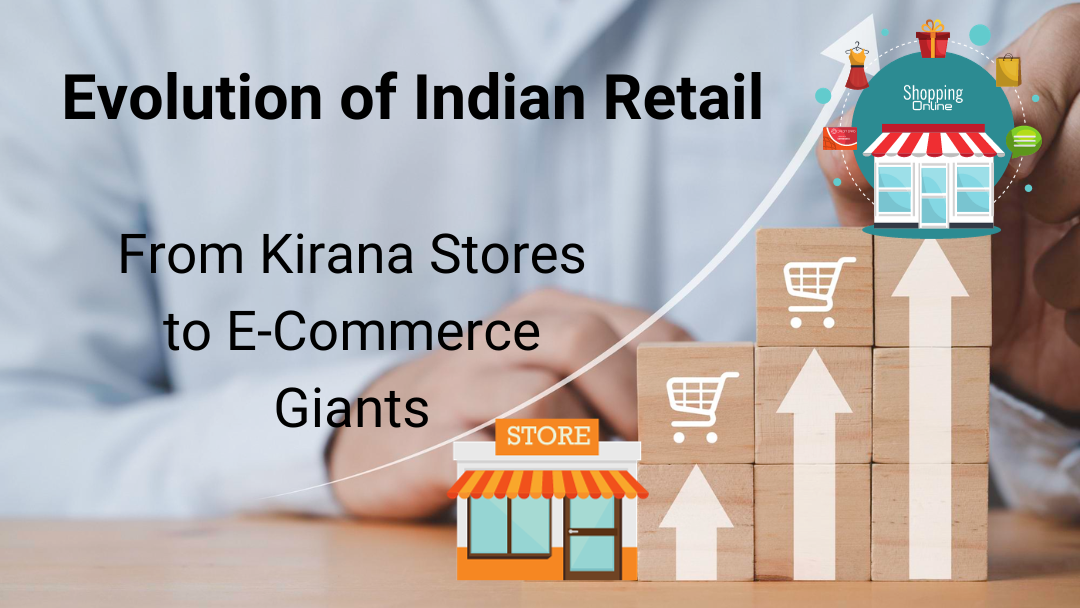What is Indian Retail?
The Indian retail market refers to the sector of the economy involved in the sale of goods and services to consumers in the country. It includes a wide range of industries like clothing and apparel, food and grocery, electronics, automobiles, and more.
The Indian retail market is known for its diverse and complex nature. It consists of various types of retail formats, including traditional mom-and-pop stores, local markets, department stores, shopping malls, hypermarkets, and e-commerce platforms.
India has one of the largest retail markets in the world, with a consumer base of over 1.3 billion people. The market is characterized by its size and potential for growth, driven by factors such as increasing disposable incomes, urbanization, changing consumer preferences, and a growing middle class.
However, the Indian retail market also faces challenges such as competition from unorganized retail, regulatory barriers, infrastructure constraints, and a complex taxation system. Despite these challenges, the retail sector in India is witnessing rapid growth and attracting significant domestic and international investments.
What are the challenges faced by Indian Retail?
Some of the challenges faced by the Indian retail industry are:
1) Competition from organized retail: The emergence of organized retail chains and e-commerce platforms has posed a significant challenge to traditional retail stores in India. These organized players offer a wide range of products, competitive pricing, and a seamless shopping experience, which can be difficult for small retailers to match.
2) Infrastructure and supply chain limitations: India’s retail sector suffers from inadequate infrastructure, including storage and warehousing facilities, transportation networks, and proper cold chain management. This can lead to higher costs, supply chain inefficiencies, and difficulties in maintaining product quality and freshness.
3) Regulatory complexities: The retail sector in India is subject to various regulatory challenges such as complex licensing requirements, restrictive labor laws, zoning regulations, and restrictions on foreign direct investment (FDI). These regulations can hinder the growth and expansion of retail businesses, particularly for international players.
4) Price sensitivity of consumers: Indian consumers are highly price-sensitive, demanding value for money and seeking the lowest prices. This makes it challenging for retailers to maintain profit margins while competing with discount-oriented businesses.
5) Fragmented market: The Indian retail industry is highly fragmented, with numerous small mom-and-pop stores and independent sellers. This results in intense competition and limited economies of scale, making it difficult for retailers to negotiate favorable terms with suppliers and achieve profitability.
6) Technology adoption: Many retailers in India still rely on outdated manual processes and have been slow to adopt technology solutions. This hampers their ability to streamline operations, efficiently manage inventory, analyze customer data, and provide a seamless omnichannel shopping experience.
7) Changing consumer preferences: Indian consumers are undergoing a shift in their shopping preferences towards convenience, personalization, and digital experiences. Retailers need to understand and adapt to these changing preferences, which may require significant investments in technology and operational changes.
8) Rising real estate costs: Prime retail spaces in cities often come with high rental and operational costs. This can be a challenge for small retailers who struggle to afford such expensive locations, resulting in less footfall and lower sales.
9) Sizeable unorganized retail sector: The presence of a large unorganized retail sector in India poses a challenge for organized retail players. The unorganized sector often offers lower prices, informal credit, and personalized services, creating competition and difficulties for organized retailers to attract customers.
10) Limited access to finance: Small retailers often face challenges in accessing finance from formal banking channels due to their limited credit history and lack of collateral. This restricts their ability to invest in technology, inventory, and expansion, hindering their growth prospects.
Key Opportunities for the Indian Retail Industry
1) E-commerce Growth: The Indian retail industry has a huge opportunity to capitalise on the growing popularity of e-commerce. With increasing internet penetration and smartphone usage, consumers are increasingly opting for online shopping. This presents an opportunity for traditional retailers to invest in their online presence and offer a seamless omnichannel shopping experience.
2) Rural Retail: With a large population residing in rural areas, there is immense potential for retailers to tap into this market segment. Rural retail can be developed by setting up dedicated stores or through innovative distribution models such as mobile vans or e-commerce delivery networks. Companies can customise their offerings to cater to the specific needs of the rural consumer, which can lead to increased sales and market expansion.
3) Organised Retail: The Indian retail industry is still largely unorganised, with a significant proportion of consumers relying on small, local stores. This presents an opportunity for organised retailers to establish their presence and gain market share. Investments in modern retail formats, such as supermarkets, hypermarkets, and specialty stores, can help attract consumers looking for a better shopping experience.
4) Consumer Preferences and Changing Lifestyles: With the rise of the middle class and increasing disposable incomes, Indian consumers are becoming more aspirational and demanding high-quality products, convenience, and personalised experiences. Retailers can leverage this trend by offering a wider range of choices, exclusive brands, enhanced customer service, and experiential shopping environments to attract and retain customers.
5) Tier 2 and Tier 3 Cities: While the metro cities have seen significant retail growth, there is still ample opportunity for expansion in tier 2 and tier 3 cities. These cities have a rising middle class with increasing purchasing power, and retailers can tap into this potential by setting up stores or establishing a strong online presence. Targeted marketing strategies and localised product offerings can help retailers cater to the unique needs of these cities.
6) Technology Adoption: The Indian retail industry can benefit from embracing technology to enhance operational efficiency, improve supply chain management, and deliver personalised customer experiences. Investments in technologies such as automation, artificial intelligence, big data analytics, and machine learning can help retailers optimise their operations, forecast demand, and better understand customer preferences.
7) Sustainable and Ethical Retailing: There is a growing trend among Indian consumers to make sustainable and ethical purchasing decisions. Retailers can leverage this opportunity by offering eco-friendly, ethically sourced, and socially responsible products. Adopting sustainable practices, such as reducing packaging waste, using renewable energy, and supporting fair trade, can help retailers attract environmentally conscious consumers and differentiate their brand.
Overall, the key opportunities for the Indian retail industry lie in leveraging e-commerce growth, tapping into rural markets, expanding organised retail, catering to changing consumer preferences, targeting tier 2 and tier 3 cities, embracing technology, and adopting sustainable practices.
Evolution of Indian Retail in India
The evolution of Indian retail in India can be traced back to ancient times when barter systems and local bazaars were common. Over the years, several changes have taken place, transforming the retail sector into the organised and modern industry it is today. Here is a brief overview of the key stages of evolution:
1) Pre-liberalization era: Until the early 1990s, India had a highly regulated retail sector, with limited options for consumers. Small mom-and-pop stores, known as kiranas, dominated the market. This phase also saw the emergence of department stores and shopping malls in urban areas.
2) Liberalisation era: In 1991, when India opened up its economy, foreign direct investment (FDI) in retail was allowed. This led to the entry of multinational retail chains, such as Walmart and Tesco, into the Indian market. However, FDI in multi-brand retail remained restricted.
3) Emergence of organised retail: In the 2000s, organised retail started to gain traction in India. Companies like Pantaloons, Big Bazaar, and Shoppers Stop introduced the concept of large-format stores, offering a wide range of products under one roof. The introduction of modern retail practices, including standardised pricing, organised supply chains, and customer loyalty programs, transformed the retail landscape.
4) E-commerce boom: With the advent of the internet and the penetration of smartphones, e-commerce gained prominence in India. Companies like Flipkart and Amazon entered the market, offering convenience and a wide range of products with door-to-door delivery. This disrupted traditional retail models and pushed retailers to expand their online presence.
5) Omnichannel retail: In recent years, retailers have embraced the concept of omnichannel retailing, which seamlessly integrates the online and offline shopping experience. Retailers now offer the option to browse and purchase products through multiple channels, including physical stores, websites, and mobile apps. This provides customers with greater flexibility and convenience.
6) Rural retail growth: As urban markets become increasingly saturated, retailers are now focusing on rural areas for expansion. The rise of rural consumption and the government’s initiatives to improve infrastructure and connectivity in rural India have made it an attractive market for retailers.
SUMMING UP
Indian retail refers to the business of selling goods directly to consumers in India. It includes a wide range of sectors such as clothing, electronics, food and grocery, furniture, and more. The retail sector in India plays a crucial role in the country’s economy, contributing to employment generation and GDP growth.
Indian retail industry has witnessed significant growth in recent years. The evolution of Indian retail in India has seen a transition from traditional mom-and-pop stores to organized retail, e-commerce, and the integration of online and offline channels. This evolution has been driven by economic liberalization, technological advancements, and changing consumer preferences.

